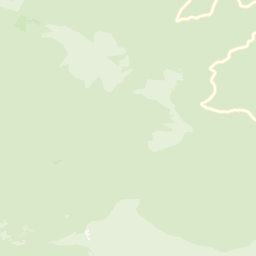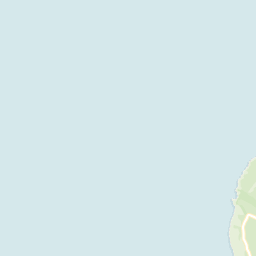- Get to Elba
-
Stay
- Accommodation that is open all year round Elba: a destination for all seasons
- Hotels Hotels to meet all needs
- Residences For an independent holiday
- Bed & Breakfasts Always ready to discover the island
- Apartments Feeling at home in Elba
- Small villas and detached houses For an autonomous holiday
- Villas Surrounded by luxury and relaxation
- Farm holiday centres Nature and flavours everywhere
- Campsites Socializing and having a good time surrounded by nature
- Camper and caravan Parking, water tank and facility areas
- Farm holiday campsites An open air holiday
- Luxury accommodation For a dream vacation
- Tourist agencies and realtors Let your holiday be organised for you
-
Eat
- Restaurants and Pizzerias Typical sea, home or more refined cuisine
- Food & Wine Experience Experiences of gastronomy and wine tasting
- Local recipes The best dishes of the Elba cuisine
- Wines Aleatico, Moscato and Ansonica: Elba wines
- Herbs and typical products Honey, beer, oil, wild and aromatic plants
- Typical dishes History and origins of Elba dishes
- Useful information
-
Visit Elba
- Beaches and coasts A different beach each day
- Places to see Museums, ancient monuments, breathtaking views
- Tuscan Archipelago National Park Seven pearls rising up from the sea
- Guided excursions Letting others take you round the island
- Useful advice What to do if...
- Maps of the Island of Elba The Island in the palm of your hand
- I am... Elba just as it suits you
- Recommended itineraries What can we go and see today?
-
Sports and free time
- Water sports Scuba diving, going snorkelling, fishing, sailing
- Land sports Cycling, trekking, free climbing!
- Elba not to be missed The unmissable experiences to do on holiday
- Outdoor sports Elba: A paradise for lovers of outdoor sports
- Enjoyment and relaxation Night life, cinemas and much more
- Courses and study trips Learn while you have fun
- Shopping Scents, colors and flavors of Elba
- Special events and exhibitions What shall we do this evening?
-
Discovering Elba
- Elba in winter The ideal place for a wonderful holiday all year round
- Paths and tracksin Elba 1000 paths to live the island to the full
- Gerring married on the Island of Elba Dreamlike weddings on the Tuscan island
- How many beaches are there in Elba? 126 beaches of 1000 colours
- History of Elba Historical notes concerning Elba and its origins
- Geology of Elba Geological origins of the Island of Elba
- Towns of Elba Administration of Elba and its eight Communes
- Interesting facts A different Elba
- Media Gallery Live and feel Elba through photographs
- Webcams
Civic Museum of Archaeology in Marciana
- Island of Elba
- The Island of Elba
- Places to see
- Museums and archeological sites
- Archaeology Museum in Marciana
There are remains of the Etruscan, Roman and stone age
| Where | Marciana - Via del Pretorio, 66 |
|---|---|
| How to get there | After reaching the parking area of the Pisan Fortress, go down the stairs near the Fortress and continue downhill on the left. After a small deconsecrated chapel, the Civic Archaeological Museum is on the left. |
| Opening hours | from June 1 to October 29 Mon, Wed, Fri, Sat 10:00 - 13:00 / 15:30 - 17:30 Thu, Sun 10:00 - 13:00 Closed on Tuesdays |
| Prices | Full € 3.00 / € 5.00 combined 3 museums Marciana / free up to 14 years old |
| Contacts | Tel. +39 377 3908001 |
Located in a building that skillfully preserves its residential character, the museum, the first archaeological museum of Elba, was opened in 1968 to house the finds uncovered during excavation campaigns that were taking place in those years across the island of Elba. These finds are among the oldest materials from Elban settlements, dating back to the earliest phases of the island's occupation in the Paleolithic.
The Archaeological Museum is organized chronologically, following the history of settlements from ancient to modern times in the western part of Elba and its maritime trade.
The collection includes many artifacts primarily from the Marciana area.
The I room is dedicated to stone tool artifacts from the Stone Age. This section attests to the presence of a series of villages located on Mount Capanne. The archaic Etruscan period is represented by findings from a series of burial tombs on Mount Capanne, which yielded bucchero pottery, Etrusco-Corinthian ceramics, Corinthian cups, and fibulae.
The II room is dedicated to Etruscan artifacts recovered from excavations at the fortress of Monte Castello di Procchio.
The III room is dedicated to the granite of Mount Capanne and the quarries that were exploited from Roman times to the Middle Ages.
The IV room is dedicated to two wrecks found in the bay of Procchio. The artifacts from the earlier wreck, a Roman merchant ship from the second half of the 2nd century AD, known as Procchio A, include Gallic, Spanish, and African amphorae containing wine, fish sauce, figs, and oil, as well as sulfur cakes and decorated glassware. Additionally, an ivory figurine originally covered in gold leaf (circa 180 AD) was found, depicting a young Dionysus, the god of wine, and Pan, the satyr god with horns and goat legs.
The findings from the second wreck (Procchio B), a French merchant ship from the 18th century, mainly consist of onboard equipment and objects: glazed ceramics, earthenware, and majolica, as well as a series of scissors in various sizes.
Museo Civico Archeologico di Marciana












- Stay
- Accommodation that is open all year round
- Hotels
- Residences
- Bed & Breakfasts
- Apartments
- Small villas and detached houses
- Villas
- Farm holiday centres
- Campsites
- Camper and caravan
- Farm holiday campsites
- Luxury accommodation
- Tourist agencies and realtors
- Eat
- Restaurants and Pizzerias
- Food & Wine Experience
- Local recipes
- Wines
- Herbs and typical products
- Typical dishes
- Visit Elba
- Beaches and coasts
- Places to see
- Tuscan Archipelago National Park
- Guided excursions
- Useful advice
- Maps of the Island of Elba
- I am...
- Recommended itineraries
- Sports and free time
- Water sports
- Land sports
- Elba not to be missed
- Outdoor sports
- Enjoyment and relaxation
- Courses and study trips
- Shopping
- Special events and exhibitions
Infoelba non si assume alcuna responsabilità per l'uso di marchi e slogan usati dagli inserzionisti e per eventuali errate indicazioni.
Informa inoltre che i listini prezzi, orari, date o altro materiale informativo pubblicato su questo sito è suscettibile a variazioni.
:: Siete quindi invitati a chiedere conferma alle strutture interessate ::

©1999-2025 Infoelba s.r.l. Unipersonale - Viale Teseo Tesei, 12 - Centro Servizi Il Molino - 57037 Portoferraio (LI)
P. IVA e C.F. 01130150491 - capitale sociale €10.000,00 i.v. - registro imprese numero 01130150491 - REA: LI - 100635
infoelba® it is a registered trademark - all rights reserved - Accesso all'area riservata























